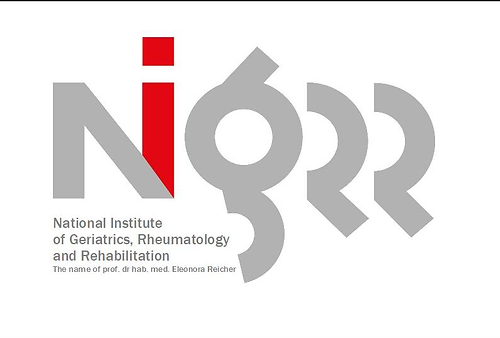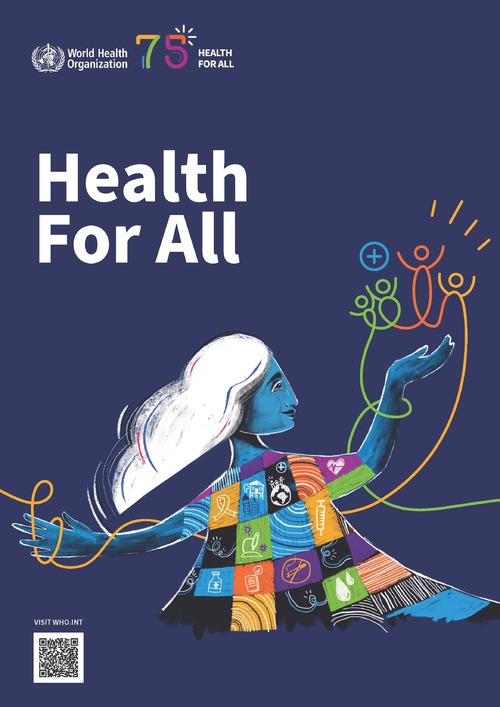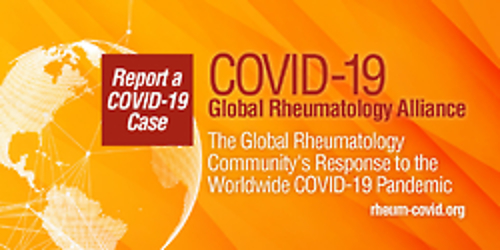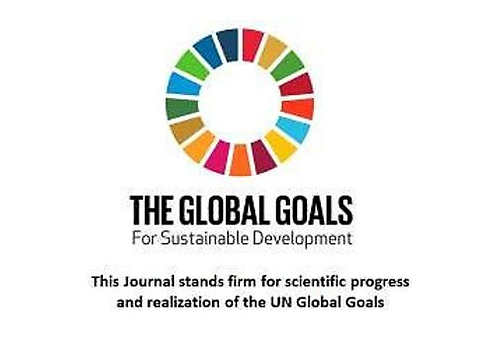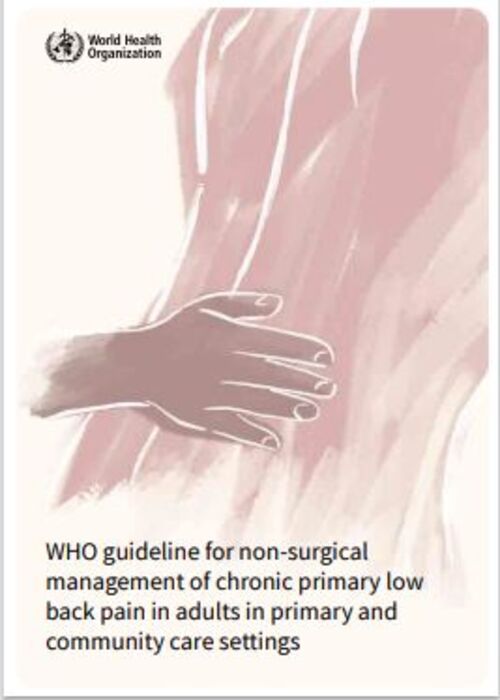Current issue
Archive
Online first
About the Journal
Editorial Office
Editorial Board
Publisher
Editorial Policies
Ethical standards and procedures
Abstracting and indexing
Reviewers
Honorary Reviewers
Subscription
Contact
Most read articles
Instructions for authors
Article processing charge (APC)
Books and Events
Books
Events
Instructions for authors

Download:
- Statement.docx
- Conflict of interest.docx
- Scope of work.docx
Reumatologia is a peer-reviewed platinum open access bimonthly journal published by the National Institute of Geriatrics, Rheumatology and Rehabilitation (Warsaw, Poland) and maintained by Termedia Publishing House (Poland). This Journal is the official organ of the National Institute of Geriatrics, Rheumatology and Rehabilitation and the Polish Society for Rheumatology.
This Journal accepts for publication original research, reviews, case-based reviews, practice guidelines, and expert opinion pieces – both from Poland and abroad. All research and review submissions are subject to double-blind peer review with at least two external experts.
The Journal editors prioritize articles with well-formulated evidence-based points that influence the science growth in rheumatology, rehabilitation of musculoskeletal diseases, immunology, and allied fields. Editorials and letters are occasionally published to draw the readers’ attention to innovative areas in clinical rheumatology, rehabilitation, and immunology. Individual case studies and case series can be considered for publication provided there is an extensive review of similar published cases which are discussed in view of comprehensive and systematic analyses of the literature. The Journal also publishes information articles and meeting reports of interest to Polish and other rheumatology societies.
Access to all articles is open in line with the “Platinum Open Access” publishing model. The journal is published in print (pISSN: https://portal.issn.org/resource/ISSN/0034-6233) and electronic versions (eISSN: https://portal.issn.org/resource/ISSN/2084-9834). The online version is accessible at https://reu.termedia.pl/.
Reumatologia is now indexed/listed by the following bibliographic databases and online platforms: Academic Journals Database, Academic Search Complete, Bielefeld Academic Search Engine, Biological Abstracts and BIOSIS Previews (Web of Science, Clarivate), Chemical Abstracts Service (CAS), Directory of Open Access Journals (DOAJ), EBSCO, Electronic Journals Library (EZB), Embase, Free Medical Journals, Genamics/JournalSeek, Geneva Foundation Free Medical Journals, Google Scholar, Harvard Libraries – University of California Libraries, HINARI Access to Research, Index Copernicus, J-Gate, NewJour, OhioLINK, Polish Ministry of Science and Higher Education (PMSHE), Polish Medical Library (GBL), ProQuest, PubMed Central (PMC), RedLink, Scopus, Swiss University Library Network (RERO), WorldCat.
Manuscripts are processed through the online editorial management system at https://www.editorialsystem.com/reumen. The Editorial System has been integrated with ORCID so that users can register and log into the system more easily using their ORCID data.
All submissions should be drafted in either American or British English. The authors for whom English is not their first language should seek the advice of a native English-speaking expert to ensure linguistically and stylistically correct submission.
AIMS AND SCOPE
Reumatologia aims to publish evidence-based rese¬arch and reviews of interest to rheumatology researchers and clinicians in Poland and elsewhere in the world. Submissions with properly formulated working hypotheses, innovative ideas, comprehensive source analyses, and correct statistical methods are prioritized.
The following is a non-exhaustive list of priority research topics:
• Innovations in pathophysiology, diagnosis, treatment, and prevention of rheumatic and musculoskeletal diseases.
• Polish and international practice guidelines for prevention, diagnosis, treatment, and rehabilitation of rheumatic and musculoskeletal diseases.
• Comorbidities and multimorbidities in rheumatology.
• Diseases of civilization and rheumatology.
• Rehabilitation of rheumatic and musculoskeletal diseases.
• Imaging and radiology of rheumatic and musculoskeletal diseases.
• Research methods and digitization in rheumatology.
RESEARCH REPORTING RECOMMENDATIONS
The authors of narrative reviews are advised to consult recommendations on comprehensive and systematic searches through multidisciplinary and specialist bibliographic databases and report their search strategy details related to the keywords and datelines of document retrieval in their search strategies. In this regard, the following recommendations could be consulted: https://pubmed.ncbi.nlm.nih.gov/21800117/.
The authors have to retrieve and cite primary, rather than secondary references. They should read full texts of all cited references to be familiar with all cited points and to validate the referencing. The Journal Editors adhere to the principles of San Francisco Declaration on Research Assessment (DORA; https://sfdora.org/) that can also be useful for authors.
The authors of systematic reviews are advised to prospectively register protocols of their reviews with the PROSPERO registry (https://www.crd.york.ac.uk/prospero/), plan comprehensive and systematic searches through Medline/PubMed, Scopus, Web of Science, DOAJ, Cochrane Central Register of Controlled Trials (CENTRAL; https://www.cochranelibrary.com/central) and reliable specialist databases. Analysis of retrieved sources using PICO (Population, Intervention, Comparator, Outcome) framework and reporting in line with the PRISMA standard are strongly advisable (http://www.prisma-statement.org/).
Original research papers and abstracts should include Introduction, Methods, Results, Discussion and Conclusion (IMRAD structure). The following global editorial recommendations are essential for authors who plan to submit their works to this Journal:
• Recommendations for the Conduct, Reporting, Editing, and Publication of Scholarly work in Medical Journals (updated May, 2023; http://www.icmje.org/recommendations/)
• CSE’s White Paper on Promoting Integrity in Scientific Journal Publications https://www.councilscienceeditors.org/recommendations-for-promoting-integrity-in-scientific-journal-publications-)
Reporting original research in line with the following EQUATOR Network standards and related extensions (https://www.equator-network.org/) is also strongly recommended:
• Randomized trials CONSORT (https://www.equator-network.org/reporting-guidelines/consort/)
• Observational studies STROBE (https://www.equator-network.org/reporting-guidelines/strobe/)
• Survey studies CHERRIES (https://www.equator-network.org/reporting-guidelines/improving-the-quality-of-web-surveys-the-checklist-for-reporting-results-of-internet-e-surveys-cherries/)
CROSS (https://www.equator-network.org/reporting-guidelines/a-consensus-based-checklist-for-reporting-of-survey-studies-cross/)
• Case reports CARE (https://www.equator-network.org/reporting-guidelines/care/)
• Animal preclinical studies ARRIVE (https://www.equator-network.org/reporting-guidelines/improving-bioscience-research-reporting-the-arrive-guidelines-for-reporting-animal-research/)
Clinical trials
Reumatologia is published in view of the ICMJE policies and recommendations. The ICMJE recommends that all medical journal editors enforce the registration of clinical trials in a public trials registry before the patient enrollment.
The ICMJE defines a clinical trial as any research project that prospectively assigns people or a group of people to an intervention, with or without concurrent comparison or control groups, to study the relationship between a health-related intervention and a health outcome. Health-related interventions are those used to modify a biomedical or health-related outcome; examples include drugs, surgical procedures, devices, behavioral treatments, educational programs, dietary interventions, quality improvement interventions, and process-of-care changes. Health outcomes are any biomedical or health-related measures obtained in patients or participants, including pharmacokinetic measures and adverse events.
The ICMJE accepts publicly accessible registration in any registry that is a primary register of the WHO International Clinical Trials Registry Platform (ICTRP) that includes the minimum acceptable 24-item trial registration data set or in ClinicalTrials.gov, which is a data provider to the WHO ICTRP.
In accordance with the ICMJE recommendations, the Editors of this Journal ask the authors to provide all necessary information regarding the registered study when submitting the article for publication: name of the register, Main ID, Public Title, Date of Registration. The data provided by the author are verified by the editors.
More information on this can be found at https://www.icmje.org/recommendations/browse/publishing-and-editorial-issues/clinical-trial-registration.html
SUBMISSION GUIDELINES
GENERAL REMARKS
Cover letter
The submitted work should be preceded by the cover letter and should be of no more than 1 page (1800 characters). Authors have to explain the aims and relevance of the results of the original work or literature review (in a few sentences).
The manuscript body
Text requirements: 12 pt font, spacing of 1.5 cm between the lines, margins of 2.5 cm. The text should not be formatted. Tables and figures should not be placed in the text. Instead, appropriate information should be provided in the place proposed by the author, such as Table I, Fig. 3, etc.
The type of work, authors and their affiliations, as well as the title, abstract and key words should be entered in appropriate fields in the electronic submission panel. We strongly advise not to provide data concerning authors (personal information and affiliations) in the work content file.
The main content of the work without an abstract, authors names and their affiliations should begin with the Introduction. The abstract is introduced in a separate “window”. Data in the text, that can identify authors, should be masked with XXXX.
Abstracts
Abstracts of original research and narrative and systematic reviews should be sufficiently informative, structured (Introduction, Methods, Results, Conclusion) and limited to 300 words. For other types of articles, non-structured abstracts with up to 200 words are acceptable. Editorials, letters, and meeting reports should not include abstracts.
Abstracts of original research should briefly describe background, aim, subject characteristics, inclusion and exclusion criteria, employed methods, important results (reporting essential statistical data, means or medians, absolute numbers with percentages, P-values with 95% Confidence Intervals, avoiding unnecessary precision in digits after decimal points), and conclusions based on the obtained results. Abstracts of systematic reviews can be structured similarly. Abstracts of narrative reviews should describe search strategies (databases, keywords, datelines). Copying different parts of the manuscript and providing references in the abstracts is unacceptable. Abstracts should disclose main keywords of the manuscript.
Keywords
Relevant keywords (3–5) should be retrieved from the Medical Subject Headings (MeSH) of the National Library of Medicine of the US (https://www.ncbi.nlm.nih.gov/mesh/).
Title page
A title page, containing authors ‚personal data, an order of authors and their affiliations, is entered separately. When entering authors’ data in the application panel, please provide ORCID IDs (Open Researcher and Contributor ID).
The Journal editors endorse principles of integrity and visibility of pre and post-publication communications presented by Sarajevo Declaration on Integrity and Visibility of Scholarly Publications (https://www.ncbi.nlm.nih.gov/pmc/articles/PMC5209927/). In line with this Declaration, authors are advised to provide their ORCID IDs with publicly available information about correct first, middle, and last names, biographical notes, publication records, reviewer, and other scholarly accomplishments. The registration with ORCID platform is free at: https://orcid.org/.
Tables and figures (or photographs)
Tables, figures (photographs) should be attached in separate files (regardless of the type of work the total number of tables/figures/photographs must not exceed 6).
Abbreviations
Abbreviations should be explained the first time they appear in the text and should not be used if a term appears only once in the work. Abbreviations should not be used in the title of work, unless the abbreviation is better known than its extension, e.g. RNA, DNA.
Acknowledgments and funding
Acknowledgments for the people whose contribution to the work was significant, but not sufficient to meet the criteria for an authorship, and an indication of sources of funding should be included at the end of the article in the section before the references.
PLAGIARISM, DUPLICATION OF ARTICLES AND OTHER DEVIATIONS FROM THE PRINCIPLES OF ETHICS IN SCIENCE AND SCIENTIFIC PUBLICATIONS
All manuscripts submitted to Reumatologia are checked to avoid plagiarism. The following anti-plagiarism software are routinely employed to detect textual similarities: plagiat.pl and iThenticate®.
In the event of a suspected misconduct, including plagiarism and duplication of publications, the matter is dealt with in accordance with the COPE (Committee on Publication Ethics) recommendations: https://publicationethics.org/node/19896.
DETAILED COMMENTS
1. Abstract – minimum 200 and maximum 300 words for original papers, and minimum 150 to maximum 200 words for review papers.
Summary of the original paper should have a structural structure (introduction, purpose of the work, material/methods, results, conclusions).
Summary of the review work, semi-structural layout with methodology of searching for literature items, e.g. key words, range of years, concepts.
2. Editorial articles are usually ordered by the editorial office, do not contain abstract, should not exceed 1000 words and 15 references, may contain 1 table, 1 figure and 1 photo.
3. Original article
Pages limit: 15 pages, references up to 40 items, tables, figures a maximum of 6 in total.
The original work should be divided into following sections: introduction and purpose of the work, material, methods (or material and methods), results, discussion, conclusions.
Following should be provided:
• a bioethics committee approval with a consent number and/or date of receipt,
• a source of financing,
• a potential conflict of interest.
4. Review paper – a layout is mostly discretionary (apart from the rules laid out below), up to 15 pages, up to 100 references; 6 tables and/or figures in total.
4a. Case-based literature review – up to 15 pages, up to 60 references, 6 tables and or figures in total; review works based on case or cases analysis should have an indication of their relevance and the applied strategy for searching literature items (e.g. keywords, concepts) and the databases stated.
5. Short communication – maximum 2 pages, 30 references, no more than 4 tables and/or figures in total
6. Protocol – up to 2 pages, 20 references, no more than 4 tables and/or figures in total.
7. Letter to the Editor for a maximum of 2 pages, 15 references, 1 table or figure.
8. Recommendations/practice guidelines – maximum 8 pages, 70 references, maximum 6 tables and/or figures.
9. References
References cited in the text should be numbered in order of their citation; references should be placed in square brackets; provide the names of the first three authors (if there are 4 authors, you must provide all of them) and the abbreviation “et al.” when necessary, the title of the work, the abbreviation of the letter (according to Index Medicus), volume, pages from-to. The established principle for citing articles in the journal Reumatologia is the AMA (American Medical Association) standard. Each reference should have a DOI number.
Example:
Rutkowska-Sak L, Gietka P. Clinical features and outcome of mixed connective tissue disease in developmental age – observational study from one center. Reumatologia 2019; 57: 315-319, DOI: 10.5114/reum.2019.91275.
When monographs or book chapters are cited, the author of the book, title of the monograph, publisher, place and year of publication should be provided. If a citation refers to a particular chapter of a book, the author of the chapter, chapter title, monograph title, scientific editor of the book, publisher, place and year of publication, pages from-to should be provided.
Examples:
Cutolo M. Atlas of capillaroscopy in rheumatic diseases. Elsevier, Amsterdam 2010.
Kwiatkowska B. Reaktywne zapalenie stawów. In: Reumatologia kliniczna, ed. Zimmermann-Górska I. Wyd. Lekarskie PZWL, Warszawa 2008: 746–757.
10. Tables
Tables should be numbered in Roman numerals in the order in which they appear in the article (Tab. I). The information contained in the tables should not be repeated in the text. The table description and explanations to the table, e.g. expanding abbreviations, are given in the footers below the table.
11. Figures and photographs
Figures and photographs should be numbered with Arabic numerals and attached in separate files. Figures should be saved in one of the following formats: .cdr, .tif, .jpg, .ai, .bmp or .eps. Photographs should have a resolution of 300 dpi and extension .tif or .jpg.
The size of the figure (photo) together with the markings and legend should not be larger than 16 by 12 cm.
Please do not “embed” drawings and photographs in MS Office documents. Figures and photographs are placed in the article in the form in which they were provided, so please ensure their good quality. If the figure (photo) has already been published, its source should be provided along with a written permission from the copyright owner for its re-publication. The editors also accept color figures and photographs. In case images of persons (patients) are used, the author of the article should provide the consent of the photographed person and of the author of the photograph for publishing of that photograph.
12. Laboratory values and measurements
The results of laboratory tests, as well as the relevant standards and standard deviations, should be expressed in units adopted by the International System of Units (Systéme International d’Unités). The temperature should be expressed in Celsius degrees.
STATEMENTS
The authors are obliged to comply with the rules and highest ethical standards for conducting scientific research and publications.
Author or co-author should participate, according to the International Committee of Medical Journal Editors (ICMJE), in:
A. Research planning or analysis and interpretation of results.
B. Writing the article or correcting it in important matters of substance.
C. Accepting the final version sent to the journal.
D. Agreement to be accountable for all aspects of the work and certainty that questions related to the accuracy or integrity of any part of the work were appropriately investigated and resolved by the author.
Authorship is considered to meet simultaneously these four conditions (A + B + C + D).
Detailed information on Role of Authors and Contributors can be found at the link: https://www.icmje.org/recommendations/browse/roles-and-responsibilities/defining-the-role-of-authors-and-contributors.html
1. On the scope of work performed
The journal uses procedures to safeguard the originality of scientific publications in accordance with the criteria of ICMJE (International Committee of Medical Journal Editors) and WAME (World Association of Medical Editors), therefore it is also necessary to provide information on the scope of work performed by each author in creating the publication – including who is the author of the concept of the work, assumptions, methods, research protocol, etc. – as well as on the affiliations of each of the authors.
We would like to inform our contributors that the Editorial Board adheres to the highest standards for scientific publications and cooperates with the authors basing on transparency of information about the real contribution of persons/entities in the creation of the publication. All cases of “ghostwriting” and “guest authorship”, as a manifestation of scientific misconduct, will be subject to customary penalties.
2. On the transfer of copyright, funding for research
For each work sent to the editor it is required to attach a statement, signed by all authors, on the transfer of copyright and publishing rights to the National Institute of Geriatrics, Rheumatology and Rehabilitation (the publisher of Reumatologia) and a confirmation, that the article has not been previously published or submitted for printing in another publishing house.
3. The authors are required to disclose conflicts of interest (COI)
A conflict of interest arises when one of the authors of a given work is subject to such circumstances, that they could raise reasonable doubt as to her/his impartiality in presenting the subject of the study. This applies particularly to the case of any author’s connections – be it of personal or material nature – with entities interested in proving the theses presented in a given article.
The conflict of interest is considered to arise, in particular, in case of circumstances listed below:
• ownership of shares in entities that will benefit in any way from a given test result,
• work or consultancy – regardless of their legal form – provided to such entities,
• charging royalties, grants or other personal or financial benefits from such entities.
A conflict of interest is also considered to arise when any of situations described above involves author’s connection with any subsidiaries of entities, that may directly benefit from the theses presented in the work.
For the transparency of the conflict of interest situations, authors are required to provide any sources of funding for their research.
It is necessary to send a statement about the absence or existence of a conflict of interest, with an indication, when necessary, of what conflict of interest is occurring, and an indication of any source of funding for the research being published.
In the case of a Conflict of Interests (COI) statement, you can attach a completed and saved PDF file ready to download and complete on the ICMJE website at https://www.icmje.org/disclosure-of-interest/ (updated February 2021).
4. Source of financing
The authors, submitting their work, fill in the statement about the source of financing of the presented work, with an indication of the form of financing, such as: grant, research institution, association, other entity.
Samples of declarations are available on the Journal website at https://reu.termedia.pl/Instructions-for-authors,3871.html.
After completing and signing the statements, authors are required to attach (scanned) forms when placing the article in the electronic submission system.
5. Ethical standards and the ethics committee consent/approval
Authors are required to report in the methods section of their original research ethics
approval protocol number, date, and name of the approving institution. Statement about written informed consent should accompany any study involving humans. Ethics approval of a longitudinal and archival study should be dated prior to the start of the research. Studies involving human subjects should meet the requirements of the WMA Declaration of Helsinki (https://bit.ly/2rJdF3M).
Privacy of human subjects involved in research studies should be observed. Case studies of patients should not disclose their identity. Animal experimentation requires adherence to globally recognized guidelines and the EU directives (http://ec.europa.eu/environment/chemicals/lab_animals/legislation_en.htm).
Consent of ethics committees is also required for a work on human biological material (also in retrospective work). Authors of works are obliged not to disclose the personal details of the patients described.
PEER REVIEW
The articles are subject to peer review by the Editor-in-Chief of Reumatologia. If an article does not meet the requirements and is inconsistent with the journal's scope of interests or contains numerous unethically copied passages (based on a high similarity index reported by the anti-plagiarism system), it is rejected outright. If the submitted work has modifiable shortcomings, the Editor-in-Chief sends the article to the authors to be corrected before further evaluation of the manuscript. If the corrected manuscript meets the formal requirements, it is forwarded for further review.
Research and review submissions from the Editor-in-Chief and other journal staff members are processed by the Associate Editors who declare no conflicts of interest in the journal's online submission system. The Editor-in-Chief does not have access to their own submissions and cannot influence the selection of peer reviewers.
Reviewer comments are drafted by experts in a given thematic field on the basis of double-blind peer review, which means that the reviewer and author identities are masked. Submitted manuscripts are evaluated by at least two external reviewers. The Editor-in-Chief selects reviewers based on the submission topic and experts’ academic credentials (based on their academic achievements and review experience).
The rules for reviewing papers comply with the guidelines of the Ministry of Science and Higher Education (https://www.gov.pl/web/science/ministry1). Additional guidance on peer review is available from https://www.ncbi.nlm.nih.gov/pmc/articles/PMC7944958/.
All reviewers are offered an option to be automatically credited for their reviewer accomplishments by Web of Science Reviewer Recognition Service (formerly Publons crediting; https://publons.com/wos-op/). This journal partners with the Service.
IMPROVEMENT OF WORK AFTER REVIEW
The work after reviews made by external reviewers and the Editor-in-Chief of this Journal is sent to the authors for revisions and corrections. Revised text passages, information in tables, descriptions of tables or figures should be marked in the text of the work with a different color or in the “track changes” mode, so that it would facilitate further development of the text at the stage of a preparation for publication. The improvement of the work should be sent via an electronic panel with a letter attached as a commentary for reviewers, responding to reviewers’ questions and explaining the changes made.
AUTHOR CORRECTIONS BEFORE PUBLICATION
After accepting the article for publishing, it is prepared by internal editors and sent in a PDF file to the author for correspondence, who is required to carefully review the text, accept any changes already made and respond to the editor with comments necessary in order to correct any errors in the text and graphic material. The author’s comments should be properly marked on the PDF as a comment in the appropriate place or sent in a separate letter (MS-Word) with the place in the text (column, verse, proposed change) or in the table or figure clearly designated. All comments should be given in a clear and legible manner.
ERRATUM
In exceptional cases, when the article has already been published, it is possible to send the Editor-in-Chief a correction request. After the Editor-in-Chief has checked and accepted the application, the changes will be published in the form of an errata in the next issue of the Journal.
WITHDRAWAL OF PUBLISHED ARTICLE (RETRACTION)
If unethical action in science is revealed after publication of the work (see above: plagiarism, duplication of work, fabrication of data), a retraction procedure will be initiated. The authors will be immediately notified of this situation. The withdrawn work will be properly described on the journal page and the information of the withdrawal and a reason for it will be presented on the index database pages. The retraction procedure is carried out in accordance with the COPE recommendations (https://publicationethics.org/files/retraction-guidelines.pdf).
OPEN ACCESS PUBLICATION AND CHARGES
The Journal editors adhere to the latest editorial recommendations on transparency and best practice open access publishing. The following document is consulted on a regular basis for updating the Journal website and editorial policies:
Principles of Transparency and Best Practice in Scholarly Publishing (by COPE, DOAJ, OASPA, WAME; updated September 15, 2022; https://publicationethics.org/node/19881).
The following Open Access Declarations are enforced by the Journal Editors:
• Budapest Open Access Initiative (http://www.budapestopenaccessinitiative.org/)
• Berlin Declaration on Open Access to Knowledge in the Sciences and Humanities
(https://openaccess.mpg.de/67605/berlin_declaration_engl.pdf)
• Bethesda Statement on Open Access Publishing
(http://openscience.ens.fr/ABOUT_OPEN_ACCESS/DECLARATIONS/2003_06_20_Bethesda_Statement_on_Open_Acess.pdf)
Reumatologia employs the Platinum Open Access publishing model.
All contents are available freely, fully, and immediately upon publication. All articles are archived by PubMed Central at https://www.ncbi.nlm.nih.gov/pmc/journals/2980/.
ARTICLE PROCESSING CHARGE (APC)
Articles sent to the Reumatologia after October 24, 2024, and accepted for publication require an obligatory charge:
- EUR 200 (or PLN equivalent at the time of payment)
- EUR 100 (or the equivalent in PLN at the time of payment) for Research letters to the Editor.
In special cases, the Editor in Chief reserve the right to change the amount of the fee or to waive the fee. Editorials by invitation are free of charge.
Editorials, letters to the editor and review articles that are commissioned by the Editorial Office are free of charge.
All prices include a VAT at a rate of 23%. An invoice will be sent once the paper is accepted for publication. Payment is usually due within 21 days of the receipt of an invoice.
The payment should be made to the following account:
Account holder: Narodowy Instytut Geriatrii, Reumatologii i Rehabilitacji
Beneficiary Address: Spartańska 1, 02-637 Warsaw, Poland
Beneficiary Bank Address: 02-232 WARSZAWA ul. ŁOPUSZAŃSKA 38D
Beneficiary Bank SWIFT: ALBPPLPW
Account-No./IBAN-Code: PL 76 2490 0005 0000 4600 7468 6439
Payment reference: manuscript ID (example: REUM-00012-2016), Correspondence Author first and last name
The corresponding author is responsible for all documentation necessary to process the bank transfer properly. The publication fee should be paid into the Publisher's account indicated below. The payer should indicate whether they require an invoice and provide the data for issuing an invoice. For this purpose, they must complete the attached form (APC form). If there is no information regarding the need to issue an invoice, a receipt will be issued. All prices include VAT at 23% (gross). The invoice will be issued after the payment has been credited to our account. Payment is usually due within 21 days of receiving confirmation of acceptance of the article. The Institute does not cover bank transfer costs.
FINAL REMARKS
The authors do not bear any costs or receive any remuneration for the articles published in Reumatologia. The editors reserve the right to make language corrections without consulting the authors. Other changes are consulted with the authors.
Compliance with the requirements presented above is a prerequisite for an article publication in the Journal. Articles that do not meet formal requirements cannot be reviewed and published.
Published articles can be picked by the Journal editors for post-publication promotion on social media provided there is no sensitive information in the articles and no direct promotion of pharmaceutical agents and medical technologies. The authors themselves are encouraged to promote their articles on social media platforms in line with widely publicized ethical and other recommendations (https://www.icmje.org/recommendations/browse/publishing-and-editorial-issues/clinical-trial-registration.html>).
We process personal data collected when visiting the website. The function of obtaining information about users and their behavior is carried out by voluntarily entered information in forms and saving cookies in end devices. Data, including cookies, are used to provide services, improve the user experience and to analyze the traffic in accordance with the Privacy policy. Data are also collected and processed by Google Analytics tool (more).
You can change cookies settings in your browser. Restricted use of cookies in the browser configuration may affect some functionalities of the website.
You can change cookies settings in your browser. Restricted use of cookies in the browser configuration may affect some functionalities of the website.



